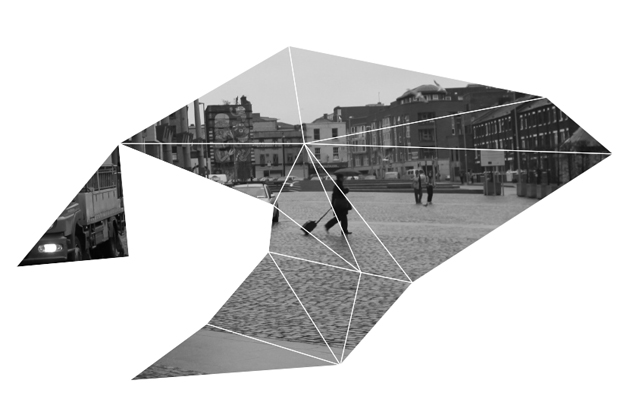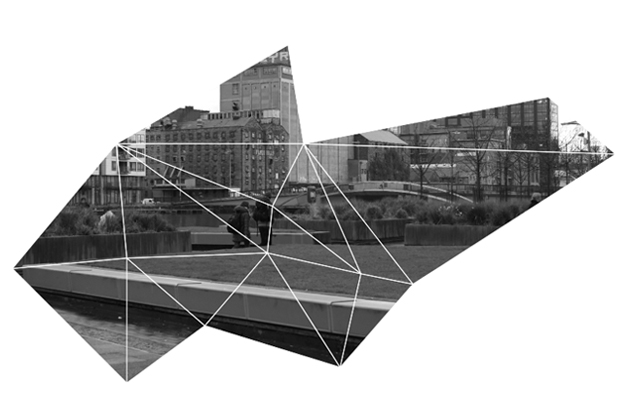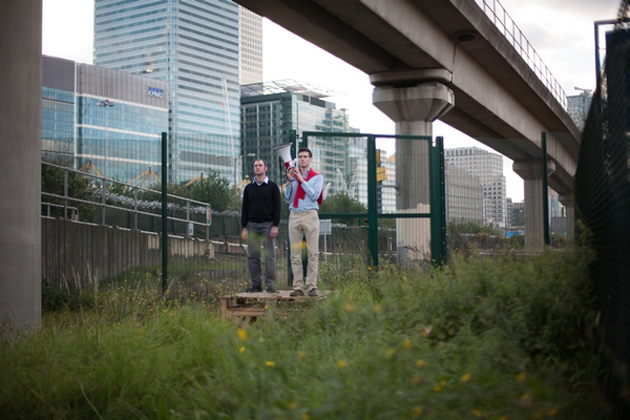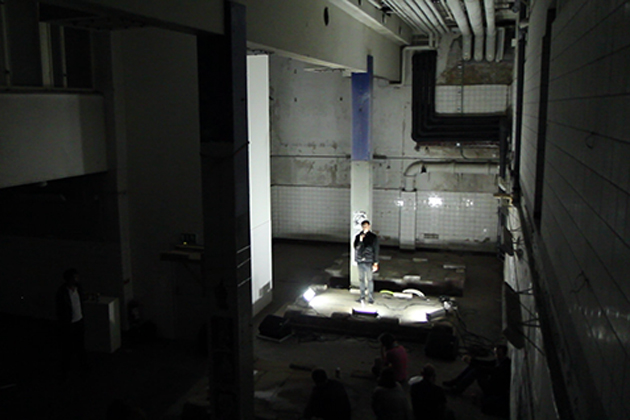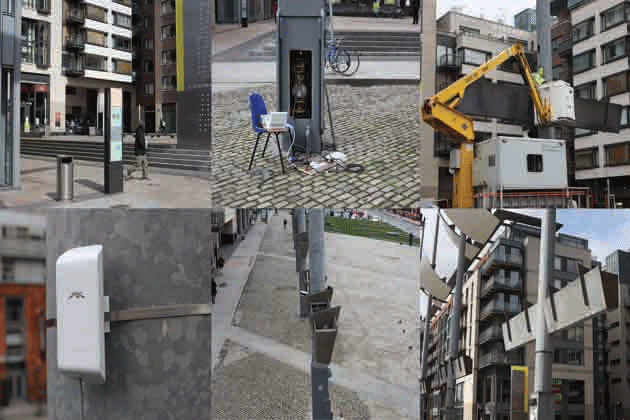Beyond Noise and Silence is a programme run by the Council’s Arts Office, and their most recent event in the LAB on Foley Street gave fascinating insights into how the city can be understood through sound.
In recent years, there has been a renewed attempt in many quarters to redefine Dubliners’ relationship to their city. These initiatives have come in many forms ranging from conferences and meetings, to physical interventions to the public space itself. The City Limits conference recently brought together many of these initiatves in the Wood Quay Venue. The capacity attendance at that particular event was an indication of the appetite to find solutions to many of these issues. Among those contributing to the wider debate is US born sound artist Sven Anderson.
For the past year, Sven has been working with Dublin City Council in the role of City Acoustic Planner & Urban Sound Designer. The result of this work isMAP: Manual for Acoustic Planning and Urban Sound Design. This project explores and operates within the intersection of sound art, public space, and urban design in contemporary Dublin. It focussed on how this often overlooked aspect of urban space can be used by architects, artists, and urban planners. MAP was initiated as part of Interacting with the City, the second strand of the Dublin City Public Art Programme.
Dublin’s sound environment is currently represented via measurements taken by 14 ambient noise monitoring sensors dispersed across the city. The data produced by these sensors reveals a quantitative perspective of the city’s sonic dynamics, as mandated by The Environmental Noise Directive. The Manual for Acoustic Planning and Urban Sound Design project seeks to complement these existing processes by encouraging alternative representations and experiences of the city’s sound environment, and by suggesting that such work might inform strategies for the city’s spatial development
The Manual for Acoustic Planning.
The logo is based on the locations of the 14 ambient sound monitoring sensors in Dublin
The Beyond Noise and Silence symposium forms part of the wider MAP project. It consists of three sessions subtitled, medium, practice, and environment. It began on April 2 with a presentation by German artist Christina Kubisch in the National College of Art and Design. Introduced by Dr Declan Long, and presented with the support of the Goethe Institute, the talk explored different elements of Kubisch’s practice and her recent work as city sound artist for the city of Bonn in 2013.
The second event of the symposium took place the following afternoon in the LAB Foley Street. This meeting brought together a number of practitioners in this field to discuss their work, influences and experiences. It was opened by Ruairí Ó Cuív, Public Art Manager, Dublin City Council.
The opening presentation was delivered by Dennis McNulty. This Dublin based artist works in many contexts using a number of media drawing on a number of influences particularly psycho-acoustics. He presented three of his projects accompanied by videos and recordings of the performances. These themes explored included the relationships between space, sound, movement, time, performer, and audience. The locations for these pieces were particularly varied, exploring the spatial qualities of contexts as diverse as Brazil, The United States, and Poplar, East London.
Exploring the Aural Landscape of Poplar, East London
The second speaker of the symposium was Ailbhe Murphy in conversation with Sven Andersson. The conversation reflected on the Breaking Ground initiative for commissioning art as part of Ballymun’s regeneration. One of the groups who took part in this initiative was Ultra-Red, a sound art collective based in Los Angeles. This group has a particular interest in Public Housing and regeneration projects, often taking a highly critical and radical stance on the process. Over the course of one year they stayed in Ballymun, making contact with local residents and groups while documenting the soundscapes of the area. The project was entitled The Debt and a 12 CD box set was produced. Many of the experiences of this process were recounted along with the issues that it raised for the various parties involved. She spoke particularly of how regeneration changes the aural landscape and embodied memory of the city, drawing on experiences in both Ballymun and Fatima Mansions.
Following the interval, the audience were treated to a presentation by María Andueza Olmedo. Having taken a PhD in 2010 on public sound art, her research seeks to reflect on the urban environment through sound and temporality. Her presentation focussed on work curated in Hokarangen, Sweden entitled Augmented Spatiality. This was undertaken in collaboration with the residents of the area and a number of artists. This work took place in a number of locations in the town from the platform of the train station to a series of underutilised window boxes on the main shopping street.
Augmented Spatiality, Hokarangen, Sweden, 2013
The final speaker of the afternoon was Sven Anderson, focussing on the aims and influences of the Map project. A resident in Ireland since the early 2000s he explained his work as a concept and process driven attempt to draw attention to the nature of public space in the city. In this he draws on many influences including Constant’s New Babylon project.
One part of MAP is a sound installation to be held in Smithfield. This project is currently being installed with the help of the Public Lighting Department and Lighthouse Cinema. Using speakers located in the square, it will subtly transmit sounds, originally generated within the cinema, into the square. A further, complimentary, project is also planned for Meeting House Square in the near future.
Preparations underway in Smithfield Square, March 2014
The audience were from a variety of backgrounds and their contribution reflected this diversity. Among those present was Christina Kubish fresh from her presentation in NCAD the previous evening. The event was closed by Ruairí Ó Cuív with details given of the final event of the symposium, taking place in the Wood Quay Venue.
Session 3 of the Symposium, From Sound Art to Urban Sound Design and Acoustic Planning, takes place in the Wood Quay Venue on May 8.
For more information on MAP: Manual for Acoustic Planning and Urban Sound Design, see map.minorarchitecture.org

